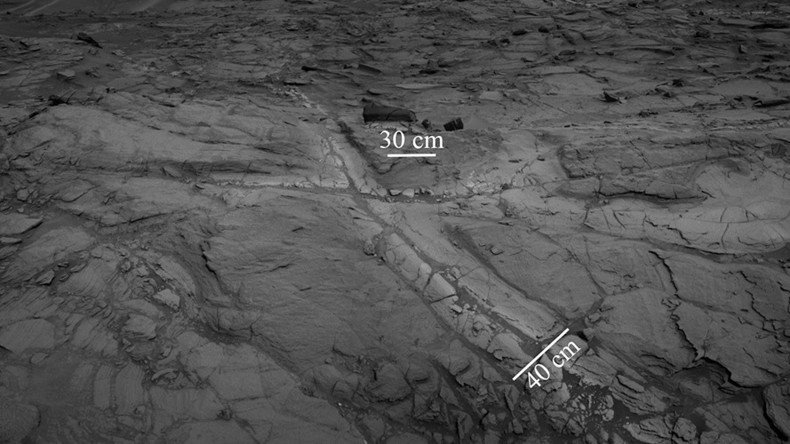Mars ‘halos’ discovery expands period Red Planet could have harbored life (PHOTO)

Liquid water existed on Mars for much longer than previously thought, widening the period of time the Red Planet could have harbored life, according to a new report based on data from NASA’s Curiosity rover.
READ MORE: NASA unveils first concept pic of Mars 2020 Rover (PHOTO, VIDEO)
The Curiosity Mars rover detected high silica around fractures in bedrock, known as ‘halos,’ in the planet’s Gale crater, indicating that ancient Mars was wet for a long period.
The silica was found over approximately 20 to 30 meters (66-100ft) of elevated terrain near a rock-layer of ancient lake sediments.
I can see your halo. 😇 Pale silica concentrations show ancient #Mars could've supported life longer than thought: https://t.co/DWPWUpdSpKpic.twitter.com/LBZfH2wlPp
— Curiosity Rover (@MarsCuriosity) May 30, 2017
"The concentration of silica is very high at the centerlines of these halos," said Jens Frydenvang, a rover-team scientist at Los Alamos National Laboratory in New Mexico, and the University of Copenhagen in Denmark.
"What we’re seeing is that silica appears to have migrated between very old sedimentary bedrock and into younger overlying rocks."
While it is unclear if this groundwater could have sustained life, its discovery certainly expands the period of time when organisms might have lived on Mars
"What this finding tells us is that, even when the lake eventually evaporated, substantial amounts of groundwater were present for longer than we previously thought," Frydenvang added.
READ MORE: Stunning Mars 360 video captures mountains, craters & 'beaches' on Red Planet
The halos were first analyzed in 2015 by the rover’s science payload, including the laser-shooting Chemistry and Camera (ChemCam) instrument. Geophysical Research Letters published the results of the study.












